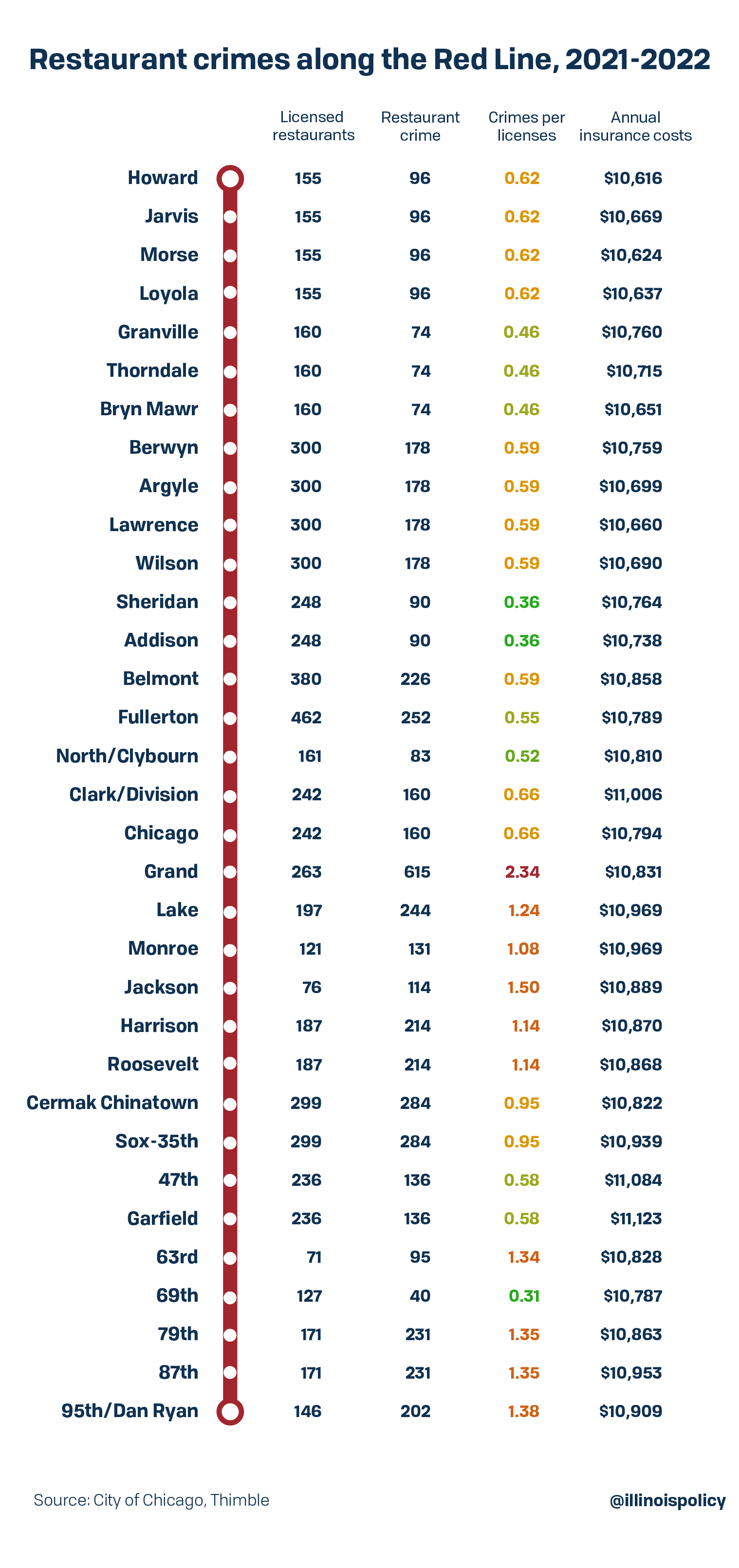Restaurants around Grand Station near Navy Pier reported 2.34 crimes per licensed retail food establishment, the most among ZIP codes with a station
PRESS RELEASE from the
ILLINOIS POLICY INSTITUTE
CONTACT: Micky Horstman (312) 607-4977
New report: Restaurant crime along CTA Red Line is highest near Grand Station, other Loop stops
Restaurants around Grand Station near Navy Pier reported 2.34 crimes per licensed retail food establishment, the most among ZIP codes with a station
CHICAGO (Feb. 8, 2023) — Those who avoid dining out in certain areas in Chicago may be wrong about where they could encounter crime, according to a new study of crime at restaurants along the city’s busiest “L” train route.
The most useful data on industry-specific crime focuses on restaurants. An Illinois Policy Institute investigation into this data shows restaurants operating in the Near North Side and in the Loop along Chicago’s iconic Red Line reported more crimes at their places of business during the past two years than there were licensed eateries.
In 2021 and 2022, restaurants along the 26-mile Red Line reported a crime at 4-in-5 licensed locations. Theft was the most common crime reported by restaurant owners, followed by battery.
The investigation found restaurants serving the Loop reported 1.2 crimes per licensed retail food establishment in 2021 and 2022, the most in any region along the train line.
Restaurants operating south of the Loop around Red Line stops reported 19 crimes for every 20 licensed retail food establishments compared to only 13-in-20 north of the Loop reporting an incident.
The costs of crime extend beyond the victim. A May 2022 report from the Journal of Economics studying crime in Chicago found street and property crime reduce customer visits to local restaurants. Researchers determined each property crime reported on a block led to 1.13 fewer visitors per month.
In addition to lost customers, higher crime rates increase insurance costs on Red Line businesses. These rates do not include the premium hikes that come with reporting a crime or the direct costs some business owners absorb to avoid paying the higher premiums.
How crime affects business costs for restaurants along the Red Line:
- Business insurance costs to restaurants operating south of the Loop along the Red Line were up to $507 more each year than the exact same restaurant on the North Side
- Eateries in the Loop paid up to $353 more each year for business insurance than restaurants to the north, which reported the lowest average crime rate along the train line
- Restaurants around Grand Station in the Near North neighborhood reported 2.34 crimes per licensed retail food establishment, the most among ZIP codes with a station
- Restaurants around the 69th Street stop in the Greater Grand Crossing neighborhood reported just 0.31 of a crime per licensed retail food establishment, the lowest rate among ZIP codes with a station
Small businesses and restaurants are the backbone of Chicago’s economy and sense of community. Studies show supporting them has proven to reduce local crime rates.
“Chicago lawmakers should be supporting and encouraging local businesses. Instead, current policies deter new growth and drive existing businesses out,” said Bryce Hill, director of fiscal and economic research at the Illinois Policy Institute. “The upcoming mayoral election gives residents the opportunity to demand that the next mayor address the city’s crime problem, which is hurting so many residents, including small business owners who are among the city’s most prolific job creators.”
To read more about crime on the Chicago Transit Authority’s Red Line, visit illin.is/redline.
For bookings or interviews, contact media@illinoispolicy.org or (312) 607-4977.
